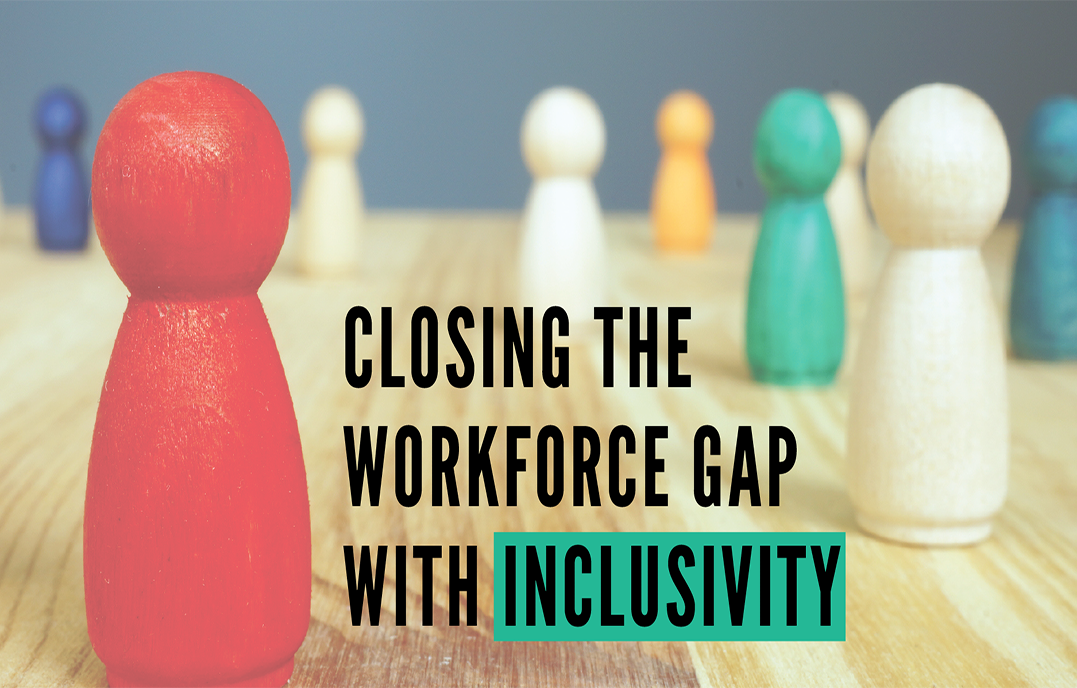As of late April 2021, there were over 9 million open jobs in the U.S., a record high. Employers across the country are scrambling for ways to fill their open requisitions, just as research shows that a stunning 52% of workers plan to change jobs in 2021. While it might sound contradictory, the U.S. is experiencing higher unemployment numbers and a labor shortage with half of the current workforce on the hunt for another job.
When businesses don’t have enough employees, they’re forced to turn away jobs or shorten the hours they are open. While the pandemic had a big impact on the labor market, the workforce gap isn’t a new problem. In October of 2019, the U.S. had more open jobs than unemployed individuals. Keeping our economy growing requires that we fill these jobs. We need to remove conventional barriers that prevent people from entering the workforce and staying employed. Drawing on the latest trends in workplace diversity, equity, and inclusion, here are two areas employers can focus on to help close the workforce gap.
Childcare support for working parents. When the Covid-19 pandemic removed the safety net of schooling and employee-paid childcare for working families, the damage was cataclysmic. Without a stable form of childcare as part of the business infrastructure, the world stopped working for the vast majority of employed parents. One-third of the U.S. workforce, or an estimated 50 million workers, had a child under 14 in their household in April 2020. In a follow-up survey, 26% of women who became unemployed during the pandemic said it was due to a lack of childcare. Without affordable and accessible childcare, working mothers are forced to make an unfair choice, and the economy cannot fully recover.
The sooner employers treat childcare with the same seriousness as healthcare and other aspects of their business infrastructure, the faster employees can get back to full force. Childcare subsidies, flexible work schedules, remote work, and on-site or local childcare spaces are options that will not only help re-build the workforce, but provide a “sticky” benefit that fosters retention. It’s time to think creatively about ways to build the childcare infrastructure needed to support working parents.
Give second chance workers a second chance. The stigma against hiring ex-offenders is lifting. The Society for Human Resource Management (SHRM) estimates that 1 in 3 Americans has a criminal background. Moreover, greater than 600,000 former inmates are returning to society every year. Ex-offenders face incredible hurdles to gaining employment, the foundation of re-building a way to contribute to society after serving their sentence. According to SHRM’s Executive Director, Wendi Safstrom, the crimes that follow ex-offenders can remain with them for the rest of their lives, regardless of what they were convicted for. “People should not be penalized for mistakes made when they were decades younger,” says Safstrom.
Second-chance hiring improves efforts to create a more equitable and inclusive workforce. But we have made finding gainful employment after prison entirely too hard as attested to by Teresa Hodge in her TEDx Talk after serving a 70-month federal prison sentence for a white-collar, non-violent, first-time offense. Take the first step to giving second chance workers a second chance by visiting www.GettingTalentBacktoWork.org and pledge to consider all qualified candidates during your interview process. Review the toolkit to learn about best practices in second chance hiring, and consider finding a local nonprofit to partner with in your second chance hiring journey.
Convincing your organization to make significant changes to its recruiting and retention strategy might be the hardest part of improving your efforts to address your labor shortage. The initiatives above are not simple to implement. But, closing the workforce gap requires widening conventional practices and walking the talk on diversity, equity and inclusion.
Question: How can you use diversity, equity and inclusion to close the workforce gap?
Driven by the premise that excellence is the result of aligning people, purpose and performance, Center for Executive Excellence facilitates training in leading self, leading teams and leading organizations. To learn more, subscribe to receive CEE News!




